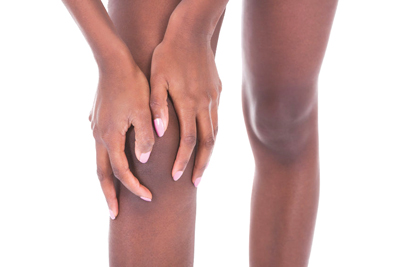Quiz – Knee Recap
Much of our daily life hinges on our knees (pun intended). This hinge joint is the largest and most complex joint in the body, and it helps with both movement and weight-bearing. What makes up our knee and what might need replacing someday? Take our quiz to find out:
1. The knee joint bears a great deal of stress for most people.

A. True
B. False
2. Basically, a knee is two leg bones held together by ____.
A. Muscles
B. Ligaments
C. Tendons
D. All of the above
3. The proper name of the kneecap is ____.
A. Sesamoid, and it is made of cartilage
B. Meniscus, and it is made of connective tissue
C. Patella, and it is made of bone
D. Quadricep, and it made of muscle
.jpg?sfvrsn=fe4c77e3_1)
4. A common knee problem is ____.
A. Sprained ligaments or muscles
B. Torn cartilage
C. Tendonitis, or inflammation of tendons
D. Arthritis
E. All of the above
5. If initial treatment methods such as medication and physical therapy don’t alleviate severe knee pain, a total joint replacement is the only option.
A. True
B. False
6. Up to __ bone surfaces may need to be replaced with prosthesis, or artificial implants.
A. Two
B. Three
C. Four
D. None, bone is not replaced
.jpg?sfvrsn=7851b616_1)
Answers:
A. True. Both everyday activities, such as lifting or kneeling down, and high-impact activities such as jogging give the knees a lot of hard work to do.
D. All of the above. Also, each bone end is covered with a layer of cartilage that absorbs shock and protects the knee.
C. Patella. The name originated from a Latin word meaning shallow dish. The patella’s primary role is knee extension.
E. All of the above. Many knees problems are a result of continual wear and tear as a person ages.
B. False. While total knee replacement is the most common type, there are also other options such as partial replacement or cartilage restoration depending on the condition and the area affected.
B. Three: the lower end of the femur, or thigh bone; the top of the tibia, or shin bone; and the back of the patella, or kneecap. They are many different types of implants that your physician will choose from to best suit your needs.
Source: The Health Library